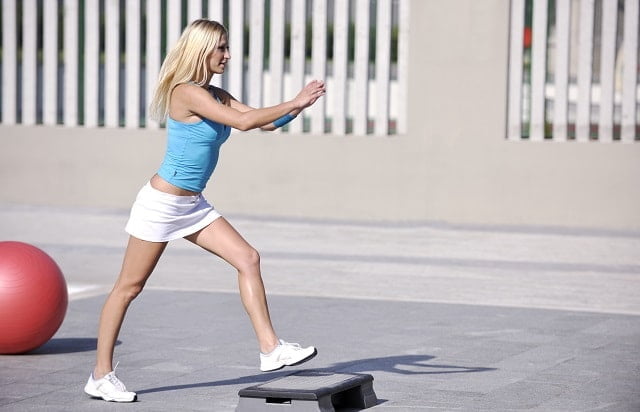Neuromuscular connections play a crucial role in our ability to move, with motor fitness being a key component of overall physical performance. In this article, we will delve into the science behind these connections and explore how exercise can enhance them to improve motor fitness. By understanding the importance of neuromuscular connections and motor fitness, individuals can make informed decisions about their exercise routines and achieve optimal physical performance.
Neuromuscular connections refer to the communication pathway between the nervous system and muscles, enabling coordinated movement. Motor fitness, on the other hand, encompasses an individual’s ability to perform physical tasks efficiently and effectively. These connections are essential for activities such as walking, running, jumping, and even intricate movements like playing a musical instrument or dancing.
Enhancing neuromuscular connections through exercise can lead to improved muscle coordination, reduced risk of injury during physical activities, and overall enhanced physical performance. By targeting specific exercises that stimulate these connections, individuals can reap the benefits of improved motor fitness and better overall movement control. This article will explore the science behind neuromuscular connections, the role of exercise in enhancing them, and ways to improve motor fitness through targeted exercises.
The Science Behind Neuromuscular Connections
Neuromuscular connections refer to the communication pathways between the nervous system and the muscles, enabling them to work together in a coordinated manner. Motor fitness, on the other hand, encompasses the overall ability to control and coordinate movements effectively. These interconnected aspects play a crucial role in physical performance, including activities such as sports, exercise, and even everyday tasks.
The signals from the brain to the muscles are transmitted through the nervous system via neurons. When an individual wants to move a certain muscle or group of muscles, the brain sends electrical impulses through these neurons to trigger muscle contraction. This process is essential for executing movements with precision and coordination. Neuromuscular connections also facilitate feedback from the muscles back to the brain, helping in adjustments and fine-tuning of movements.
In addition to coordinating movement, neuromuscular connections also play a vital role in maintaining balance and stability. When engaged in physical activities that require complex motor skills such as running, jumping, or lifting weights, these connections ensure that different muscle groups work together harmoniously. This results in efficient movement patterns that maximize performance while minimizing the risk of injury. Understanding how neuromuscular connections function provides valuable insight into improving motor fitness and overall physical capabilities.
Benefits of Enhanced Neuromuscular Connections
Enhanced neuromuscular connections offer a range of benefits that can significantly improve an individual’s physical performance and overall well-being. These connections play a crucial role in coordinating movement and ensuring efficient communication between the brain and muscles. When these connections are enhanced, individuals experience improved muscle coordination and control, leading to better performance in various physical activities.
One of the key benefits of enhanced neuromuscular connections is the reduction in the risk of injury during physical activities. Stronger connections between the nervous system and muscles enable individuals to move with greater precision and stability, reducing the likelihood of awkward movements or missteps that could result in strains, sprains, or other injuries. Additionally, improved neuromuscular connections can lead to better balance and proprioception, further decreasing the risk of accidents during exercise or daily activities.
Furthermore, individuals with enhanced neuromuscular connections often experience an overall improvement in their physical performance. Whether engaging in sports, strength training, or everyday movements, individuals with strong neuromuscular connections benefit from more fluid and efficient movement patterns. This can translate to improved athletic performance, increased stamina, and better functional fitness for activities of daily living.
Ultimately, enhanced neuromuscular connections contribute to a higher quality of movement and a reduced risk of injury during physical activities. This emphasizes how exercise enhance neuromuscular connections and improve motor fitness by providing a foundation for optimized physical performance.
The Role of Exercise in Enhancing Neuromuscular Connections
Neuromuscular connections play a crucial role in coordinating movement and controlling muscle actions. These connections allow signals from the brain to reach the muscles, enabling smooth and efficient movement. Motor fitness, on the other hand, refers to the overall ability to perform physical activities with strength, speed, agility, and coordination. In this section, we will explore how exercise can enhance neuromuscular connections and improve motor fitness.
There are various types of exercises that specifically target and enhance neuromuscular connections. These exercises focus on improving communication between the nervous system and the muscles, ultimately leading to better coordination and control of movements. Some examples of such exercises include:
- Plyometric exercises: These high-intensity movements such as jump squats and box jumps help improve neuromuscular function by engaging rapid muscle contractions.
- Functional training: This type of exercise includes multi-joint movements that mimic real-life activities, improving overall muscle coordination.
- Balance and stability exercises: Activities like yoga or using balance boards challenge the neuromuscular system to maintain stability, thus enhancing motor fitness.
It’s important to note that different forms of exercise affect neuromuscular connections in unique ways. Aerobic exercises like running or cycling can enhance blood flow to the brain, promoting healthy neural connections. On the other hand, resistance training helps build strength in muscles, leading to improved motor fitness. By incorporating a variety of exercises into a workout routine, individuals can effectively target and enhance their neuromuscular connections while improving their overall motor fitness.
In addition to targeting neuromuscular connections, exercise also plays a vital role in improving motor fitness. Aerobic exercises increase cardiovascular endurance and stamina – key components of motor fitness – while resistance training contributes to muscular strength and power.
Balanced with flexibility work for joint mobility and core stabilization for balance improvement – these different types of exercises together contribute positively toward an individual’s motor abilities. Therefore, incorporating a well-rounded workout routine with diverse types of exercises is essential for enhancing both neuromuscular connections and motor fitness.
Improving Motor Fitness Through Exercise
Motor fitness refers to the overall ability of an individual to perform physical activities that require coordination, agility, balance, and power. It is a crucial component of physical health and can be significantly enhanced through exercise. The relationship between motor fitness and neuromuscular connections is fundamental in understanding how exercise impacts overall physical performance.
One way exercise enhances neuromuscular connections and improves motor fitness is by stimulating the communication between the brain and muscles. When engaging in physical activities, the brain sends signals through the nervous system to different muscle groups to initiate movement. Regular exercise helps strengthen these neural pathways, leading to more efficient and coordinated movements. For example, strength training exercises like squats or lunges require precise coordination between various muscles, ultimately improving motor fitness.
Furthermore, regular exercise has been shown to reduce the risk of injury during physical activities by enhancing neuromuscular connections. Stronger neuromuscular connections allow for better control over muscle movements and coordination, which can help prevent falls or accidents during sports or daily activities. Additionally, exercises that improve balance and coordination directly contribute to enhancing motor fitness and reducing the likelihood of injury.
Incorporating a variety of exercises into a workout routine – such as aerobic exercises, resistance training, as well as balance and coordination exercises – can effectively enhance neuromuscular connections and improve motor fitness. The diverse range of movements involved in these exercises challenges the neuromuscular system and encourages the development of stronger connections between the brain and muscles.
| Benefits | Examples |
|---|---|
| Improved muscle coordination and control | Strength training exercises like squats or lunges |
| Reduction in risk of injury | Balance and coordination exercises |
| Enhanced overall physical performance | Aerobic exercises like running or cycling |
Types of Exercises That Improve Motor Fitness
Motor fitness is crucial for overall physical performance, as it encompasses the coordination, control, and efficiency of movement. For individuals looking to improve their motor fitness, targeted exercises can play a significant role in enhancing neuromuscular connections and overall physical performance. Here are some types of exercises that have been shown to effectively improve motor fitness:
1. Aerobic Exercises:
Aerobic exercises such as running, swimming, and cycling not only improve cardiovascular health but also play a vital role in enhancing motor fitness. These exercises require rhythmic and coordinated movements, which contribute to the improvement of neuromuscular connections. Additionally, aerobic exercises help in maintaining a healthy weight, which further supports motor fitness by reducing the strain on joints and muscles.
2. Resistance Training:
Resistance training, including weightlifting and bodyweight exercises, is essential for improving muscle strength and endurance. Engaging in resistance training increases not only muscle mass but also enhances neuromuscular connections by promoting efficient communication between the brain and muscles. As a result, individuals experience improved coordination and control during various physical activities.
3. Balance and Coordination Exercises:
Exercises that specifically target balance and coordination, such as yoga, Pilates, and specific stability drills, are crucial for improving motor fitness. These exercises challenge the body’s ability to maintain stability and control movement through different planes of motion. By focusing on balance and coordination, individuals can strengthen their neuromuscular connections, leading to improved overall physical performance.
Incorporating these types of exercises into a workout routine can significantly enhance motor fitness by improving neuromuscular connections and promoting efficient movement patterns. As individuals engage in these targeted exercises consistently over time, they can expect to experience improved coordination, control, reduced injury risk during physical activities and an overall boost in their physical performance.
Case Studies and Research Findings
Research has shown that regular exercise can play a significant role in enhancing neuromuscular connections and improving motor fitness. One study published in the Journal of Strength and Conditioning Research found that participants who engaged in specific resistance training exercises experienced notable improvements in neuromuscular function, leading to enhanced muscle coordination and control.
Another study conducted at the University of California, Los Angeles, demonstrated that individuals who incorporated balance and coordination exercises into their workout routines showed a significant increase in their overall motor fitness.
In addition to research findings, real-life case studies have also highlighted the positive impact of exercise on neuromuscular connections. For example, professional athletes who undergo targeted neuromuscular training programs have demonstrated improved agility, speed, and precision in their movements. Similarly, individuals recovering from injuries or neurological conditions have been able to regain motor function through carefully designed exercise regimens that focus on strengthening neuromuscular connections.
The data gathered from these studies and case reports emphasize how exercise can be a powerful tool for enhancing both neuromuscular connections and motor fitness. By understanding the specific types of exercises that target these connections and incorporating them into a regular workout routine, individuals can experience significant improvements in overall physical performance.
| Study/Case | Findings |
|---|---|
| Journal of Strength and Conditioning Research | Participants experienced notable improvements in muscle coordination and control through resistance training exercises. |
| University of California, Los Angeles Study | Incorporating balance and coordination exercises led to a significant increase in overall motor fitness. |
| Professional Athlete Case Studies | Demonstrated improved agility, speed, and precision in movements after engaging in targeted neuromuscular training programs. |
Implementing a Neuromuscular Connection and Motor Fitness Training Program
When it comes to enhancing neuromuscular connections and improving motor fitness, exercise is key. By engaging in specific types of physical activity, individuals can significantly improve their neuromuscular connections, ultimately leading to better motor fitness. But what exactly are neuromuscular connections and motor fitness, and how can exercise play a role in enhancing them?
Neuromuscular connections refer to the communication pathways between the nervous system (specifically the brain) and the muscular system. When these connections are optimized, they allow for more efficient signaling from the brain to the muscles, resulting in better coordination, control, and overall movement quality. On the other hand, motor fitness encompasses an individual’s ability to perform various physical activities with efficiency and precision. This includes factors such as strength, flexibility, balance, and coordination.
So how can exercise enhance neuromuscular connections and improve motor fitness? First and foremost, certain types of exercises specifically target these connections. For example, resistance training is well-known for its ability to not only strengthen muscles but also improve neural adaptations. Additionally, balance and coordination exercises challenge the neuromuscular system in different ways, leading to enhanced connectivity between the brain and muscles.
Aerobic exercises also play a crucial role in improving motor fitness by enhancing cardiovascular health, endurance, and overall physical performance. Improved cardiovascular function translates into better blood flow to muscles and nerves, which can support more efficient neuromuscular communication. By incorporating a variety of exercises into their workout routines that target both strength and coordination, individuals can work towards optimizing their neuromuscular connections while simultaneously improving their motor fitness level.
Conclusion
In conclusion, it is clear that exercise plays a crucial role in enhancing neuromuscular connections and improving motor fitness. The science behind neuromuscular connections highlights how signals from the brain to the muscles work and the coordination of movement. By engaging in specific types of exercises that target these connections, individuals can experience improved muscle coordination, reduced risk of injury during physical activities, and overall enhanced physical performance.
Furthermore, the relationship between motor fitness and neuromuscular connections cannot be understated. Motor fitness, which encompasses factors such as strength, endurance, flexibility, and coordination, is directly influenced by the quality of neuromuscular connections within the body. Therefore, incorporating a variety of exercises into one’s workout routine – including aerobic exercises for cardiovascular health, resistance training for strength building, and balance and coordination exercises – can lead to significant improvements in motor fitness.
As readers consider how to incorporate targeted exercises into their fitness routines to enhance neuromuscular connections and improve motor fitness, it’s important to emphasize the long-term benefits of doing so. Not only can individuals expect to see improvements in their physical performance and overall health, but they may also experience a reduced likelihood of injury during physical activities.
By taking a proactive approach to prioritize these elements within their workouts, individuals can ultimately lead healthier and more active lives.
Frequently Asked Questions
How Exercise Can Enhance Neuromuscular Connections and Improve Fitness?
Exercise can enhance neuromuscular connections and improve fitness by promoting the growth and strengthening of muscles, as well as improving the efficiency of nerve signals to the muscles. This leads to better coordination, strength, and overall physical performance.
How Can Exercise Improve Motor Fitness?
Exercise can improve motor fitness by enhancing muscle strength, flexibility, agility, and coordination. Engaging in regular physical activity helps to refine movement patterns and motor skills, leading to improved overall motor fitness and performance in various activities.
What Are the Benefits of Neuromuscular Exercise?
The benefits of neuromuscular exercise include improved coordination, balance, posture, and joint stability. It also helps prevent injuries by promoting proper movement patterns and enhancing the efficiency of neuromuscular connections. Additionally, neuromuscular exercise can contribute to increased strength and overall physical fitness.

Passionate about providing useful information to anyone with an interest in the field of Personal Training, I strive to pass on to our readers quality information and to answer any questions about Personal Trainers, the work they do and how to become one.





